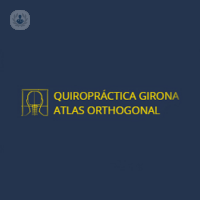Chiropractic
What is chiropractic?
Chiropractic is a profession that is responsible for diagnosing, treating and preventing disorders of the musculoskeletal system, and disorders that may cause nervous system function and health. It places special emphasis on the relationship of the nervous system in relation to other systems with respect to the general balance of the body. The treatment employs manual techniques, with specific manual adjustments.

Why is it done?
The nervous system is protected by the bones of the skull and spine, the latter being the central axis of the locomotor system. From there stretches a nervous network that branches off the body. The 26 segments that make up the spine have some flexibility and plasticity but, over time, they can see their ability to function altered. When it occurs, interference occurs in the nervous system, which can no longer function normally, which is called vertebral subluxation. That's when you should go to a chiropractic specialist.
It is also recommended for patients with common, simple or nonspecific back pain. Also for neck and head pain.
What does it consist of?
Chiropractic consists of adjusting the segments of the spine affected by the vertebral subluxation, to return to the spine the functional normality, eliminating the interferences produced in the nervous system.
The methods used by chiropractic experts use slight touches on a key point, as well as mild and gentle pressure on the affected joints. This should be done on stretchers designed specifically to make adjustments in various positions, according to breathing or movements, to be able to act on the spine, on the skull or other parts of the body.
Preparation for chiropractic
It is very important to consult with the doctor before going to a chiropractor's office, since there are factors that may discourage its application:
- People with bleeding disorders or taking anticoagulants may have a higher risk of stroke if the spine is manipulated.
- It is not recommended in people with severe osteoporosis or in women with weak bones as a consequence of cancer treatment, since there may be a risk of fracture during chiropractic. - It is also not recommended if the patient feels numbness, tingling or loss of strength in an arm or leg, if he has cancer in the spine or excessive movement in the spine (instability).
However, in general, no special preparation is required before the chiropractic adjustment, apart from taking into account the aforementioned factors.
Care after the intervention
Chiropractic adjustment uses harmless techniques and usually does not cause side effects. However, some people experience some mild ones the following days, which include headache, fatigue or pain in the treated parts of the body (back, neck and head). In general, serious complications associated with chiropractic adjustments are very rare, especially if performed by a trained specialist. If a herniated disc occurs or the patient's condition gets worse, compression of the nerves of the lower spine occurs or there is a dissection of the vertebral artery (cerebrovascular accident), it is essential to see a doctor.










